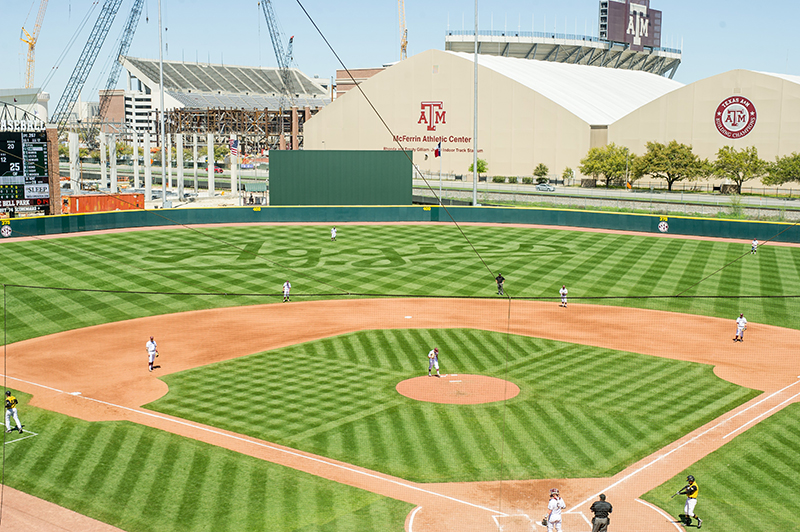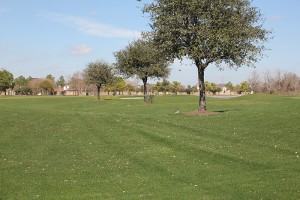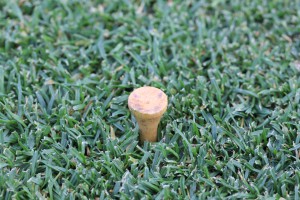Latin Name: Lolium perenne L.
Growth Habit: Bunch-type
Vernation: Folded
Leaf: Ridges on upper surface and glossy on lower surface
Ligule: Membranous, truncate to rounded
Auricles: small, soft claw-like
Inflorescence: Spike with many spikelets; multiple florets per spikelet
Description: Perennial ryegrass is a cool-season turfgrass with dark color, fine leaf texture, and a bunch-type growth habit. It is most widely used to overseed bermudagrass golf courses and athletic fields to provide winter color. It is also a component of many cool-season seed mixtures that may contain Tall fescue, Kentucky bluegrass, and/or Annual ryegrass. These mixtures are most successful when planted in shaded areas where warm-season species may struggle, particularly in the northern parts of Texas. However, like all cool-season grasses its lack of heat and drought tolerance do not make it a widely planted turfgrass in Texas.
Strengths: Fine leaf texture, dark color, tolerant of low mowing heights, and rapid establishment.
Weaknesses: Poor heat and drought tolerance
Recommended Mowing Height: Because perennial ryegrass is only used as an annual crop to overseed warm-season turfgrasses, the mowing height should be determined by the warm-season species being overseeded
Recommended Mowing Frequency: Every 3-7 days depending on height of cut using a rotary or reel mower.
Fertilization Requirements: 1 to 2 lbs N per 1,000 ft2 per year. Single application rates should range from 0.5 to 1 lb of N per 1,000 ft2 applied during the spring and fall growing season.
| Perennial ryegrass Varieties Available in Texas | ||
| Variety | Latin Name | Availability |
| Many available | Lolium perenne L. | Seed |


